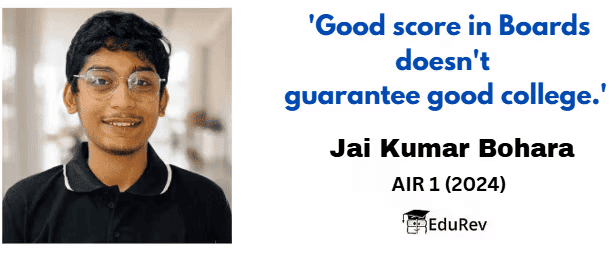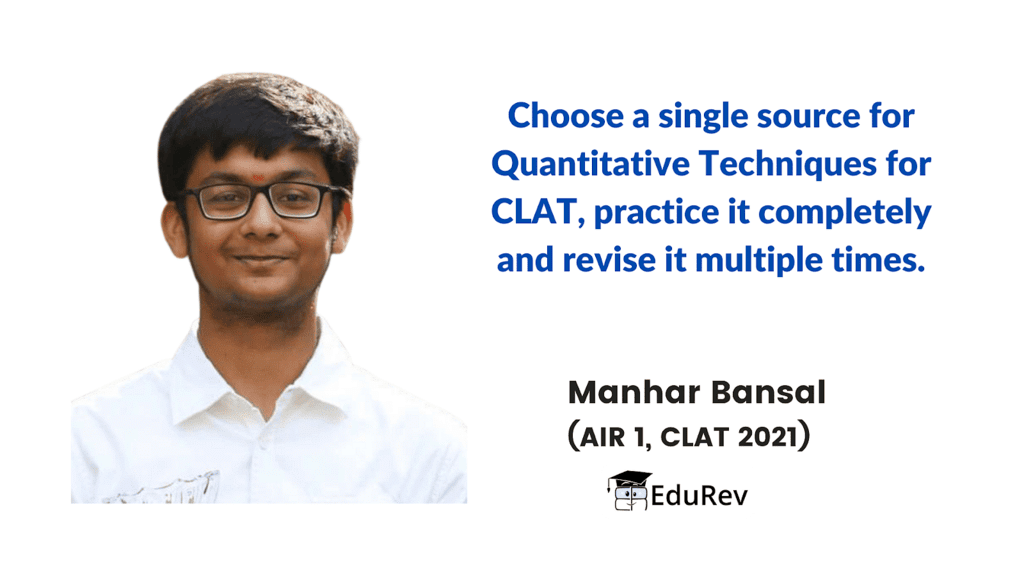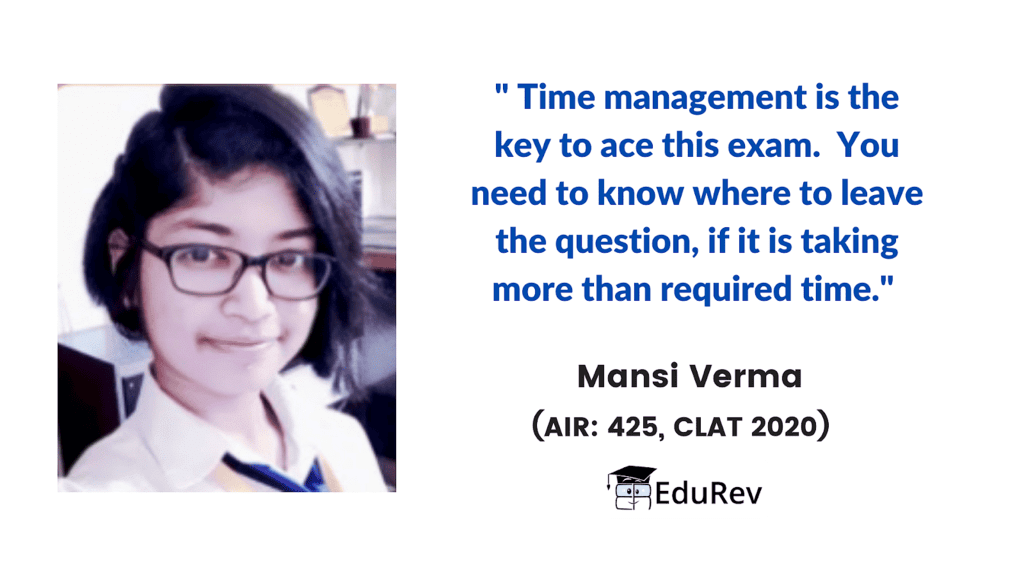How to Prepare for Mathematics/ Quantitative Techniques | CLAT Mock Test Series 2026 PDF Download
Quantitative Techniques, which account for 10% of the CLAT, can be a deciding factor for those who are seeking admission to the esteemed National Law Universities (NLUs). It should be noted that despite the fact that this section only contains 15–17 questions broken up into 3–4 sets of questions, those who want to get into the best National Law Universities (NLUs) in India shouldn't ignore it.
How to Prepare for Mathematics/ Quantitative Techniques for CLAT?
Having a section-wise strategy is very important for the exam. Knowing what problems are you going to face in a particular section and how to solve it is important. This should not be the case that you are midway into preparation and then are facing problems and are taking extra time to solve those.

Here is a stepwise strategy compiled by EduRev experts on the guidance of various CLAT toppers to help you understand How to prepare for Mathematics/ Quantitative Techniques for CLAT? in an effective manner.
Step 1: Understand the Role of this section in CLAT
One good thing about the Quantitative Techniques section is it is probably the easiest of the five sections as the difficulty level of questions asked is Class 10 standard; the difficulty level of the other sections is Class 12 level. So, if you are willing to put in a little bit of effort and press all the right buttons you can score heavily in this section, maybe score 8, 9, or even 10 marks out of 10!

- Do not take this section lightly: One should never think that you find this section difficult and you will compensate the marks of this section in other sections. Never take any section of CLAT lightly and think that you can leave its preparation.
- Try to remove the fear of mathematics: Some aspirants find this section difficult as they think they are not that good in mathematics or since last two years they haven’t studied mathematics and have taken another stream. Because of the fear of mathematics aspirants think to leave this section and compensate it with others which is a very wrong thing to do.
- Clear your basics in Mathematics: The most crucial step in this part is to work on your fundamentals. You won't be able to attempt any question on time if your fundamentals are unclear. If you don't comprehend something, go back to your 8 class NCERT textbooks.
- Value the section: Aspirants need to value this section as it plays a major role in CLAT and will definitely help you achieve a great rank in the exam. Competition is never on simple things but always on difficult things and those difficult things will help you decide your rank and will give you an advantage over those students leaving the preparation of this section.
- Will help you improve your rank: This section plays a major role in improving the rank as those who will prepare this section have chances to get a better rank than those who are leaving it.
Step 2: Know the Syllabus, Exam Pattern & Important Topics of Quantitative Techniques for CLAT
CLAT UG Quantitative Techniques Section will comprise short sets of facts or propositions, graphs, pictorial or diagrammatic, or other textual, representations of numerical information from the graphs, representations or passages. The section requires the application of mathematical operations on such information.
 These questions will demand the following:
These questions will demand the following:
- Deriving, inferring and manipulating numerical information given in the passages, graphs or other representations, and
- Applying various 10th standard mathematical operations on the information, from areas like ratios and proportions, mensuration, basic algebra and statistical estimation.
Syllabus of the CLAT Quantitative Aptitude: The syllabus of this section can be divided in two parts
- Quantitative Aptitude: It is a collection of topics in which majorly arithmetic topics like Simplification, Percentages, Profit & Loss, Ratio Proportion, Partnership etc are included. Students need to study Quantitative Aptitude and apply them in Quantitative Techniques Questions. Quantitative Aptitude Questions are asked in other law entrance exams where as Quantitative Techniques questions are asked in CLAT.
- Quantitative Techniques: Questions are not in single form in this portion. They are asked with the help of pie- chart, table, or in pictorial form but in these questions concepts of Quantitative Aptitude are asked. Basically, Quantitative Technique is a use of Quantitative Aptitude, and Quantitative Techniques based questions are asked in CLAT.
Important Topics for CLAT Quantitative Techniques Section
Step 3: Carefully Select the Study Material
It is a little difficult to collect sources of study material for this section as many multiple sources are available on both online and offline modes which caters to the need of many different examinations. Choosing the best source for CLAT that matches the exact level of exam is important. Here is the list of sources for you:

- Quantitative Aptitude by RS Aggarwal: Old book of RS Aggarwal is better as it is having limited content but the new book is having a large amount of content and covering it completely is impossible.
- Study Material Compilation: Taking the perfect study material to cover this section will be helpful to you as you will be provided exact amount of content which you need to crack this section. You can take study material of EduRev which is compiled by experts and will help you save a lot of time, effort, and money in your preparation.
- Choose a Single Source: More material you will search the more trouble it will create for you. Choose a single source, practice it completely and revise it multiple times.
- Some other books: You can refer to these books in case you have sufficient time:
- Fast Track Objective Arithmetic by Arihant Publications
- 30 days wonder for Maths by S Chand
- Quantitative Aptitude for Competitive Examinations by Pearson
Step 4: Fix a Daily Study Routine for the Section
- Daily 90 to 120 hours: you need to devote daily 90- 120minutes to this section. In this one to two hours daily for this section, you need to study some new content and revise which you have already studied.
- Clear your basics: To attempt questions from Quantitative Techniques section, it is extremely important for candidates to work on their basics. If candidates feel that they do not have conceptual clarity on some topics, they must refer to their Class 8 NCERT books and clear their basics.
- Practice effectively: Do not just read the topics of this section, pick up every single question and solve it. Check whether the answer is right or not. If the answer is not right analyze why it was not right and what went wrong.
- Focus on achieving accuracy: As you start practicing the questions, focus on achieving accuracy first and do not worry about the time taken to solve a question. Once you develop a habit of deriving answers accurately, start focusing on your speed.
- Revision: Revise the question which you found difficult to attempt, Revise the theory topics which you have already studied earlier. Revise those questions which you were unable to solve but are having a possibility of coming in the exam.
Step 5: Solve Mock Tests, Sample Papers, and Previous Year Papers
- Solving question papers will provide you with an understanding of how the paper is structured.
- For checking the level of your preparation you should start attempting mock tests, even if your preparation is completed just for one subject, you should start attempting subject mocks. EduRev provides you with Quantitative techniques mocks for your excellent practice in this section.
- When you are attempting complete mocks, you will start learning management of time as well as the discipline to sit straight for 2 hours. For complete mocks Click here.
- As Quant is a scoring section and by the good attempt, you will get a good score without a doubt, for which it is a must practice more and more mocks and that will give you familiarity with the questions in quant.
- You must mark the important and tricky questions while attempting the mocks and go back to them from time to time.
- You must give lots of previous year's question papers so that you will get yourself inlined with the pattern and type of questions coming in the CLAT exam. You can find previous years' questions papers on the EduRev platform, Click here.
Step 6: Strategize How to attempt the section during the exam?
- Sectional time for the exam: How much time you need to give to this section in exam? The answer to this question is very simple. You can devote minutes to this section on the basis of number of questions. For eg. If 17 questions come from this section, you can devote upto 17- 20 minutes. Is 5 questions come you can devote 15-17 minutes.

- Time Devotion subjective to every individual: The time devotion discussed above vary from individual to individual. Some students can finish 15 questions in 10 minutes whereas others may take upto 25 minutes. But ideally, you should try to finish 15 questions in 15- 17 minutes only.
- CLAT question papers: Once candidates are over with practicing enough questions from each topic of Quantitative Techniques, they should attempt previous years’ CLAT question papers and sample papers. Candidates are advised to particularly solve CLAT 2021 question paper and CLAT 2020 question paper to get themselves acquainted with the new CLAT exam pattern.
- CLAT mock tests: You can attempt CLAT mock tests and prepare a detailed strategy that you are going to follow on the exam day. Candidates must focus on mock tests and practice tests. It is important to analyze the tests taken, recognize the weak areas, and work towards them.
Important FAQs related to CLAT Quantitative Techniques
Q.1. What type of Maths comes in CLAT?
Ans: Passage-based mathematical questions are asked to candidates in CLAT exam. The aim of the questions is to test the analytical ability wherein candidates should be able to find and manipulate the relevant information comfortably.
Q.2. Are Mathematics questions in CLAT difficult?
Ans: The Mathematics questions in CLAT are of Class 10 difficulty level. Therefore, the best way to prepare for the section is by practicing mathematical questions from Class 10 NCERT books other than solving previous year question papers.
Q.3. Which are the important topics to prepare for CLAT Quantitative Techniques section?
Ans: Some of the important CLAT Quantitative Techniques topics that candidates should pay attention to include:
- Ratios and Proportions
- Algebra
- Mensuration
- Time and Work
- Statistics
Q.4. Which is the one thing we should do to prepare for CLAT Quantitative Techniques section?
Ans: The best way to prepare for CLAT Quantitative Techniques section is by regularly practicing the questions. However, the two most important points that candidates must keep in mind while practicing the questions include:
- Speed
- Accuracy
Q.5. How many questions come in CLAT from Quantitative Techniques section?
Ans: About 13-17 questions are asked from the Quantitative Techniques section of CLAT exam.
|
1 videos|37 docs|71 tests
|






















